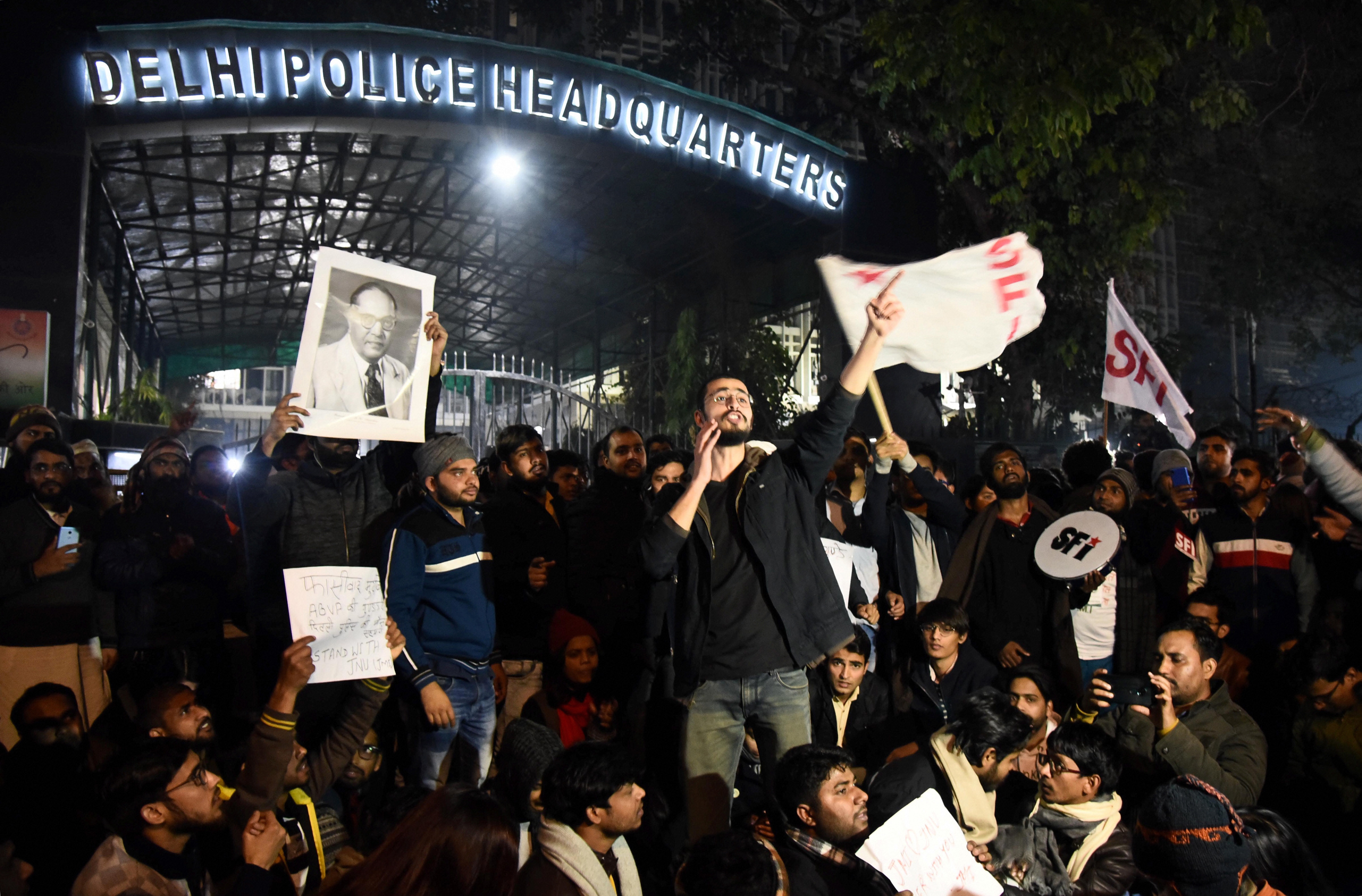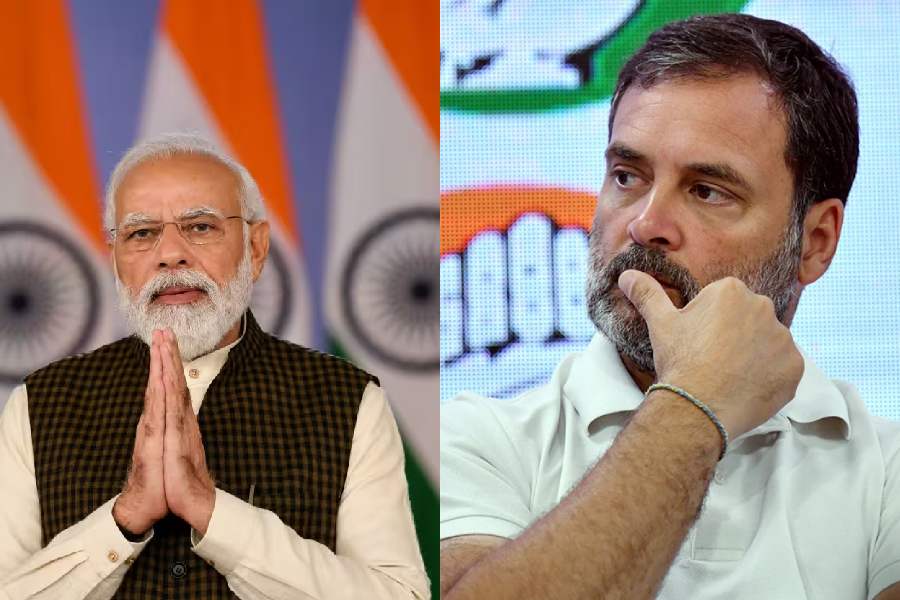A student of mine, a prominent devotee and a one-time resident of Jawharlal Nehru University, once tried to explain his ideas to me. He belonged to no party. He claimed that media and social sciences today restrict wisdom to policy, to the voice of management and technocracy. One has to wait for a Thomas Piketty or an Abhijit Banerjee to spell out the new proverbs of science. The student, an anthropologist, claimed that parallel to the world of policy is the world of folklore, of anecdotes and storytelling that enact the wisdom of today’s world, even in a mass society.
The student claimed that the media and the regime reduced JNU to a stereotypical slice of ideology, to a mere shell of political rhetoric. Yet JNU, my friend said, for all its social science is a fragment of folklore, of the easy wisdom that sustains democracy as insight and imagination beyond the primness of psephology.
The Bharatiya Janata Party saw itself as an electoral system, a demographic fact. JNU saw itself as a folk world. The BJP felt it was a majoritarian fact. JNU argued that there was a bit of JNU in every corner of India, a dream of JNU as embodying equality and the dream of ideas. By attacking JNU, the BJP cut deep into the soul of India. What emerged from the clash was sheer theatre, a morality play — all of India is watching with amazement and delight. Even housewives delighted in this script called JNU claiming politics was again their favourite serial.
How does one explain JNU, the JNU of the last few months? JNU embodied the ideals of a Nehruvian university, the dreams of the Radhakrishnan report, that education was a secular, plural world and the university with its celebration of dissent was the best representative of it. As a university, JNU taught the regime that the university embodied education as a public good and that the idea of the public and the university as a commons of knowledge had to catalyse and challenge the idea of the nation state. One embodied dissent and diversity, a dream of plurality, the other was increasingly wearing the livery of uniformity. The BJP also used patriotism as a weapon to beat ideas as whipping boys. Dissent was suddenly seen not as creative but as a source of dissonance. JNU defended the idea of education as a public good against a State which wanted to increase fees to alter the social composition of the university. JNU also taught the regime that ideas are not possible without research or dissent. Finally, JNU justified the idea of the university as a space for public good by sustaining democracy. The idea of JNU as a morsel of democracy, as an intellectual fragment proved more powerful than the drumbeat of RSS cadres.
As a university, JNU went further by shedding its stereotype as a repository of ideological thought. What the student protests emphasized was the idea of a university not as ideology but as a value frame for pluralism. The students emphasized the critical idea of citizenship as value innovation rather than a mode of certification. They rescued the Assam problem from the frontier and showed there is an Assam in every part of India. By juxtaposing value frames to ideologies, the University to the RSS, they showed that civility and citizenship work together, that every syllabus echoes the dreams of the Constitution, that the university is a trustee of constitutional morality. The university through its syllabus and its message of ideas is legislative in a deeper sense than a Parliament can be. In that every teacher is a philosopher king spreading his or her ideas. Romila Thapar proved she could checkmate Amit Shah, not because of battalions but because of the power of a community of ideas. The BJP regime, as a result, revealed its academic envy for the university as a domain of ideas that no shakha could match.
But more critically the university system, with the epidemic of protests that followed the Citizenship (Amendment) Act, showed that the university was, in terms of ideas and sensibilities, an early warning system. It showed that the University and the Gulag could not exist together. They were parallel worlds, incommensurate with each other’s value frames. In fact, one of the ironic moments of JNU came when former students like S. Jaishankar and Nirmala Sitharaman played mouthpieces of a party instead of revealing some sense of doubt and conscience. JNU showed that concepts can be genocidal, and one needs good syllabi to keep the Constitution sacrosanct. JNU is reminding India that you don’t need a Stalin to build a camp. Any bureaucrat who loves policy and software could do it efficiently today.
JNU also showed that it could not be soaked permanently in stereotypes. Firstly, rather than playing out any ideological script or doctrinaire catechism, the protest merely upheld the spirit of the Radhakrishnan report. In fact, by misreading the message it was the home minister who showed what an ideological mastodon he was.
It is clear that the Left is changing, leaving behind a few remnants of Stalinist orthodoxy. One can see it in the style of two old university icons. Prakash Karat still looks immobile, embalmed as an ideological fist. It reveals that ideologists from different parties, as they create commissars of the mind, are brothers under the skin. Sitaram Yechury sounds plural and playful, playing the political accordion skilfully between Constitution and campus. But change is not a mere question of ideology. It is a question of a new generation of students who believe in peace tactics, in the cosmopolitanism of the university and the ideal of citizenship, who still see in the university an everyday enactment of freedom, dissent and diversity. It is they who are the torchbearers of the new JNU. But what is wonderful is the sense of genealogy even where ideas are discontinuous. In fact, one of the most beautiful facts about a university is the role of exemplars. A great teacher is cited and respected, his stories traded like a perpetual gift. One thinks of a Romila, a Rajaraman, a Kaviraj, a Palat. As people talk of them, one senses the spirit of a university as a vocation, a craft and a career devoted to ideals. Such exemplars remain iconic of freedom and their biographies keep the institution plurally alive. They provide the folklore of a university which can outlive any short-lived policy. More than in the media, the charisma of ideas is still alive in the world of JNU. Without this, the world of storytelling and gossip of ideas and icons, no university would survive. JNU has an entire humus of legends it can thrive on.
It shows how important exemplars are to the life of a university. Mere paradigms do not add to the magic of ideas. Such exemplars acting out ideas also show why the RSS in its drabness can no longer be the Pied Piper of education.
Yet, one has to emphasize that a moment of rebellion, of protest, has also to be a moment of reflection. JNU has to rethink the role of its supine bureaucracy, especially the clerical role of its vice-chancellor. It reminds one of a story about Patrick Geddes, the great educationist. While designing the campus of the Banaras Hindu University, he was asked by one of the nationalists where the administrative department was. He pointed to a small building with the pretensions of an outhouse. His audience was stunned till Geddes warned, make it bigger and it will cannibalize you. It is a warning that JNU should pay heed to, using the solidarity of faculty and students to control the clericalization of the university. The protests at JNU, in fact in a variety of campuses, revealed that ideas are still alive on the campuses, and dissent is respected. Civil society and democracy must be grateful as both gird themselves for the next round of the political struggle.
The author is an academic associated with Compost Heap, a network pursuing alternative imaginations.










